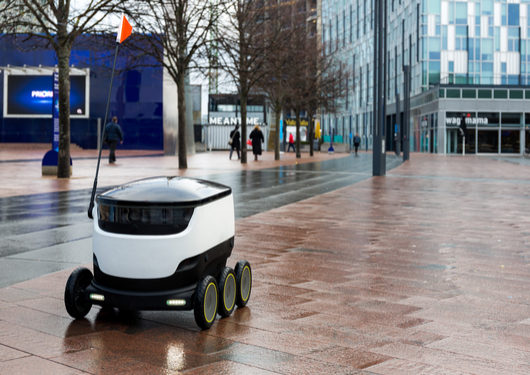
Visit Our Sponsors |
|
|
|
|
|
|
|
|
|
|
|
|
|
|
|
|
|
|
|
|
|
|
|
|
|
|
|
|
|
|
|
|
|
|
|
|
|
|
|
|
|
|
|
|
|
|
|
|
|
|
|
|
|
|
|
|

“STOP, in the name of love!” a man sings at the machine, palm outstretched, jumping back in mock alarm. “What the hell is that?”
It is a self-driving delivery robot, and it is also a conversation starter — a unit of rounded plastic about the size of a mini-fridge, sending ripples through the streets near Borough station, where Starship Technologies has its business headquarters. The company operates a small fleet of 10-15 robots, delivering mostly takeaway food orders, and increasingly parcels, over distances of up to two miles.
The fact the machines still turn heads — and must be accompanied on journeys by handlers, as agreed by Starship with Southwark borough council — suggests the future of fully autonomous delivery is not yet here. But it is on its way, and faster than the robots’ top speed of 4mph might suggest.
With politicians and the public more wary of self-driving cars than ever following the first pedestrian fatality last month, and drone activity severely regulated, ground robots delivering small goods seem a comparatively straightforward proposition. As online shopping booms, consultants McKinsey & Co predicted in 2016 that within a decade 80 percent of all items would be delivered autonomously.
RELATED CONTENT
RELATED VIDEOS
Timely, incisive articles delivered directly to your inbox.


